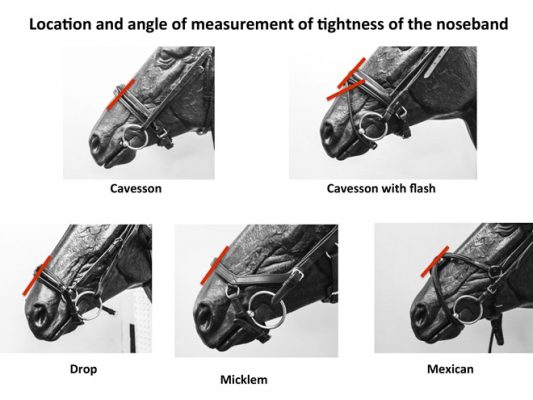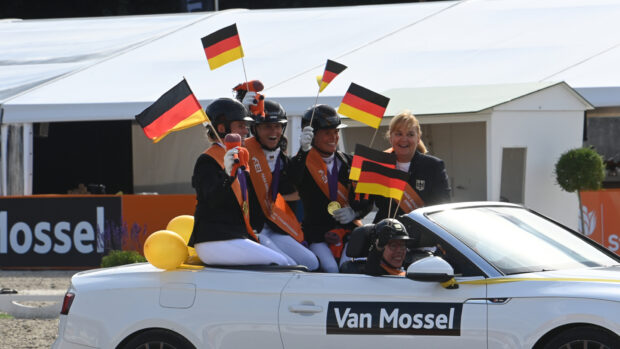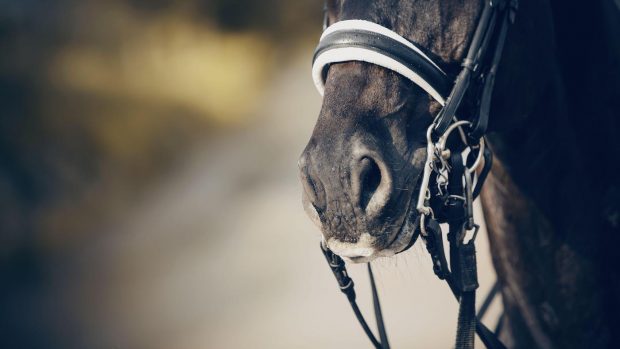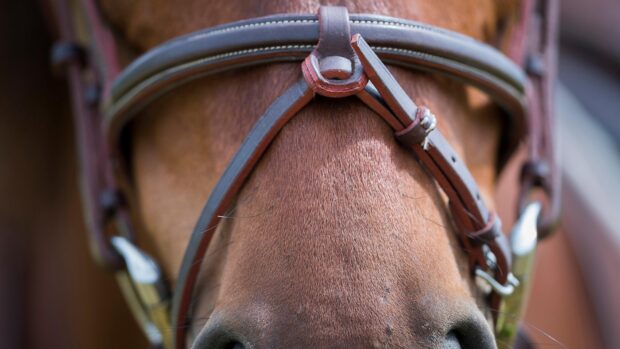
A noseband tightness limit is to be enforced in all disciplines in Denmark from 2018.
The move follows research by the Danish equestrian federation, headed by FEI vet Mette Uldahl, which found a correlation between tight nosebands and mouth lesions.
The 2018 rule will require a gap of 1.5cm between the horse’s nasal plate and the noseband (see illustration above).
Selected technical delegates will be trialling measurement methods at 2017 events in readiness for the rule change. No sanctions for too-tight nosebands will be imposed this year.
“From 1st January 2018, officials will check at the venues if there is a suspicion that the noseband is too tight,” said a statement from the federation.
“The aim is to ensure in cooperation with the riders that riding at the venues always takes place with sufficient governance of horse welfare.
“If officials find that a noseband is too tight, the rider will be asked to loosen it according to the rules, after which the competitor can participate in the competition.
“If the rider refuses to loosen the noseband, or if there are repeated violations of the noseband tightness rules, sanctions will be imposed.”
The federation started the study in 2014 to record types of riding equipment and tack used on competition horses and establish the impacts these have.
The results are expected to be published in a scientific journal by the end of this year.
More than 3,000 eventers, showjumpers, dressage and endurance horses were examined in the study.
The bit and type of noseband were recorded, the tightness of the noseband measured and the corners of the horses’ mouths inspected for lesions and blood.
Some horses were recorded as having oral lesions, most of them in dressage.
According to the study, the there was a “very clear correlation” between the tightness of the noseband and the occurrence of these lesions.
“The tighter the noseband was, the more oral lesions were recorded,” adds the statement from the federation.
“Horse/rider combinations at higher level of competition had a higher prevalence of oral lesions than at lower level.
“Based on these findings the regulation of noseband tightness is found to be an important focus area in the aim of reducing the frequency of oral lesions findings in competition horses at all levels.”
Article continues below…
You might also be interested in:

Tight nosebands can cause distress, study finds
Researchers found horses showed physiological stress responses when
Spurs and whips
The researchers found a low proportion of horses had spur-associated lesions or worn hair on the flanks.
“The study indicated that spurs are technically more difficult to use correctly for riders at a low level of competition compared to riders at a higher level of competition,” said the federation’s statement.
“For all riders, regardless of level, a relatively longer spur presented a significantly greater risk of finding hair on the spur and worn hair on the horse’s ribcage compared to a shorter spur.
“We are pleased that the occurrence of lesions caused by spurs was relatively low, but we will use the results and the correlations found as a tool for future control of equipment and training of the riders.”
Horses were also inspected for lesions on their shoulders and quarters from use of the whip.
Incidences of lesions in these areas were “very low”.
The federation added that it is “pleased” at the lack of these incidences, but is aware individual cases of lesions from use of the whip must be identified and addressed at events.
For all the latest news analysis, competition reports, interviews, features and much more, don’t miss Horse & Hound magazine, on sale every Thursday




